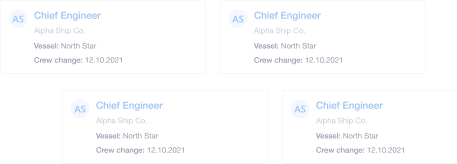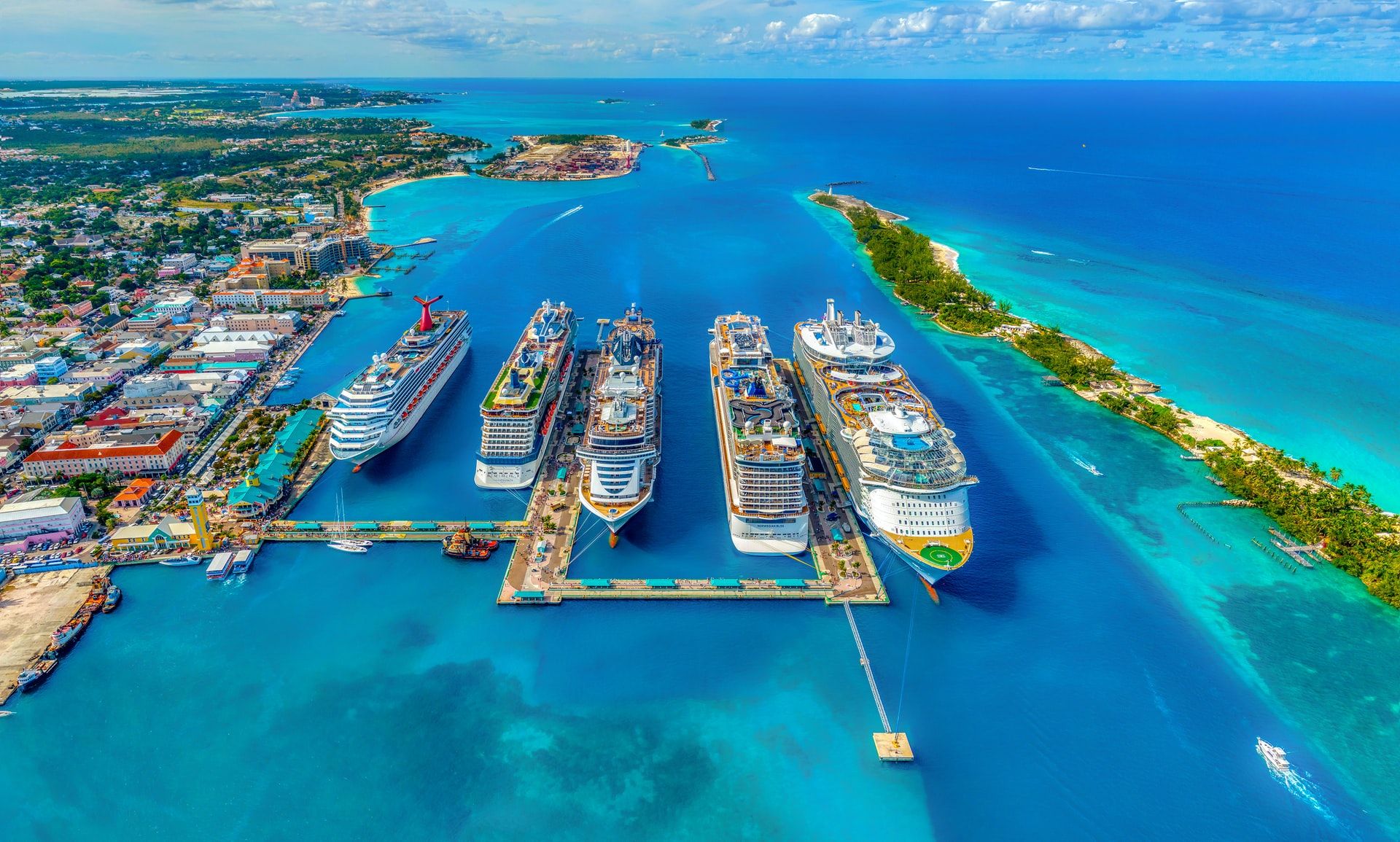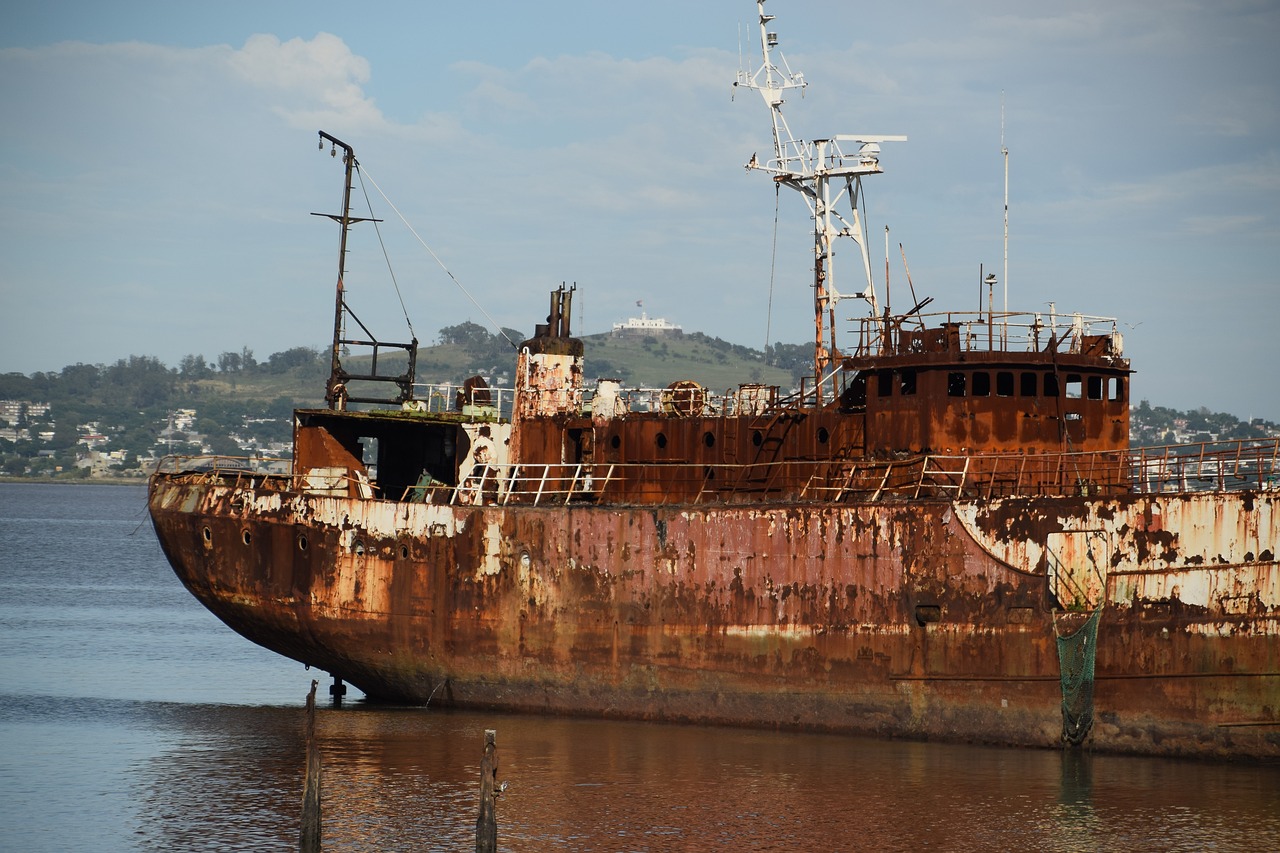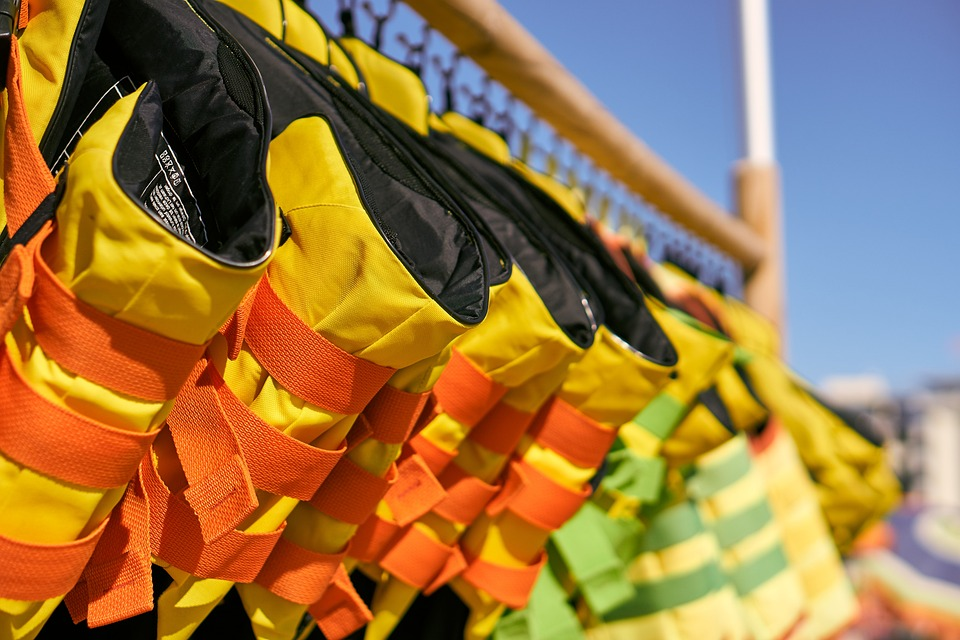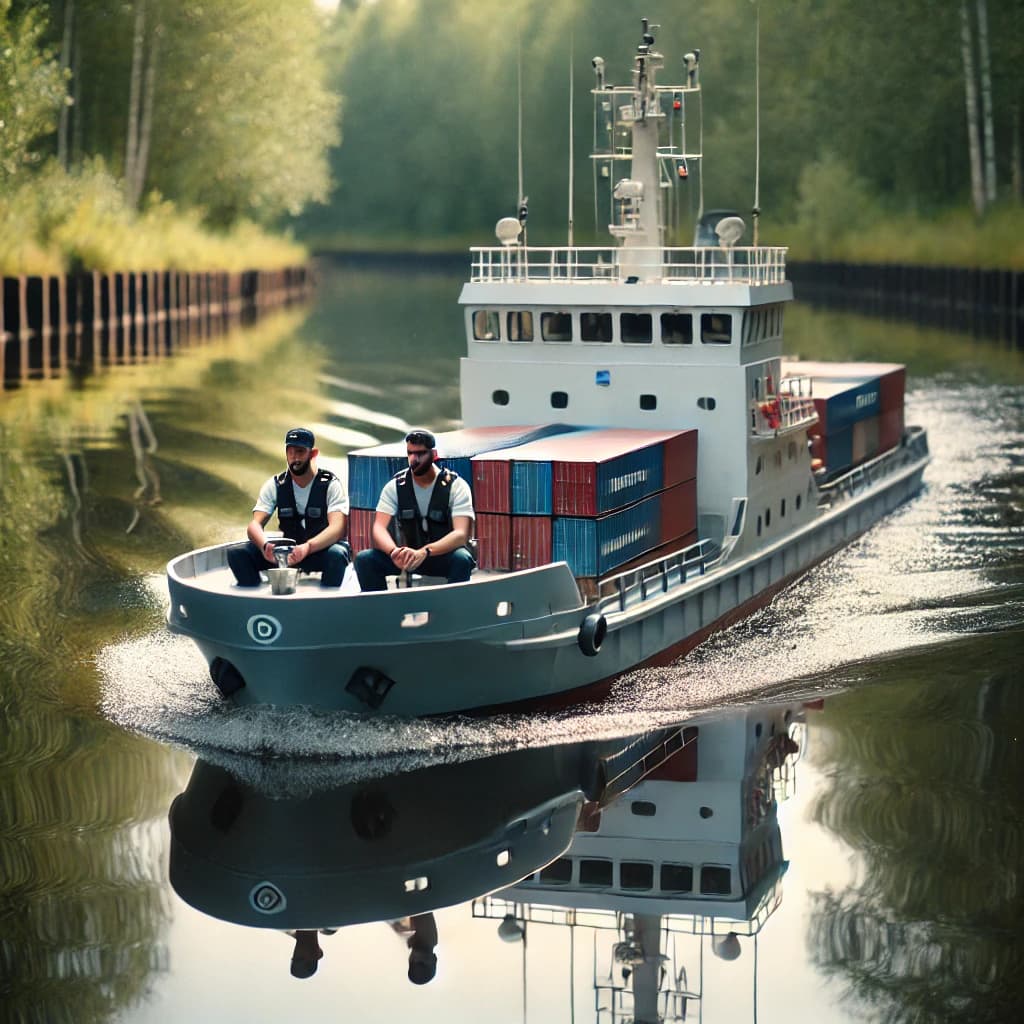A cruise ship is a passenger ship that sails to a number of different destinations with the pleasure of the voyage being entirely the point. Cruise ships are synonymous with being luxury vessels and their amenities, activities, drinking and dining options, and entertainment are all created with the passenger’s experience in mind.
Cruises can last a couple of days or nights, one or two weeks, or even longer. The ship will sail a set schedule to ports that are usually located at exotic or touristically interesting destinations.
ARE YOU LOOKING FOR JOBS ON PASSENGER SHIPS? VIEW MARTIDE’S PASSENGER SHIP JOBS NOW!
The trip is normally a round one, with the cruise ending at its home port - also sometimes called an embarkation port or turn around port.
Read more: Everything You Need to Know About Coaster Vessels
But while you might think that’s all there is to know about cruise ships, trust us, there’s a little more to it and that and in this article, which is one in a series of posts about different vessel types, we’ll take a look at everything you need to know about cruises and and the characteristics of a cruise ship.
A deep dive into the cruise ship and cruise lines
Despite a cruise ship having very little in common with cargo and container ships, heavy lift vessels, feeder vessels, commercial fishing boats and chemical tankers, the cruise ship is still part of the merchant navy (or merchant marine) fleet as it is a working vessel.
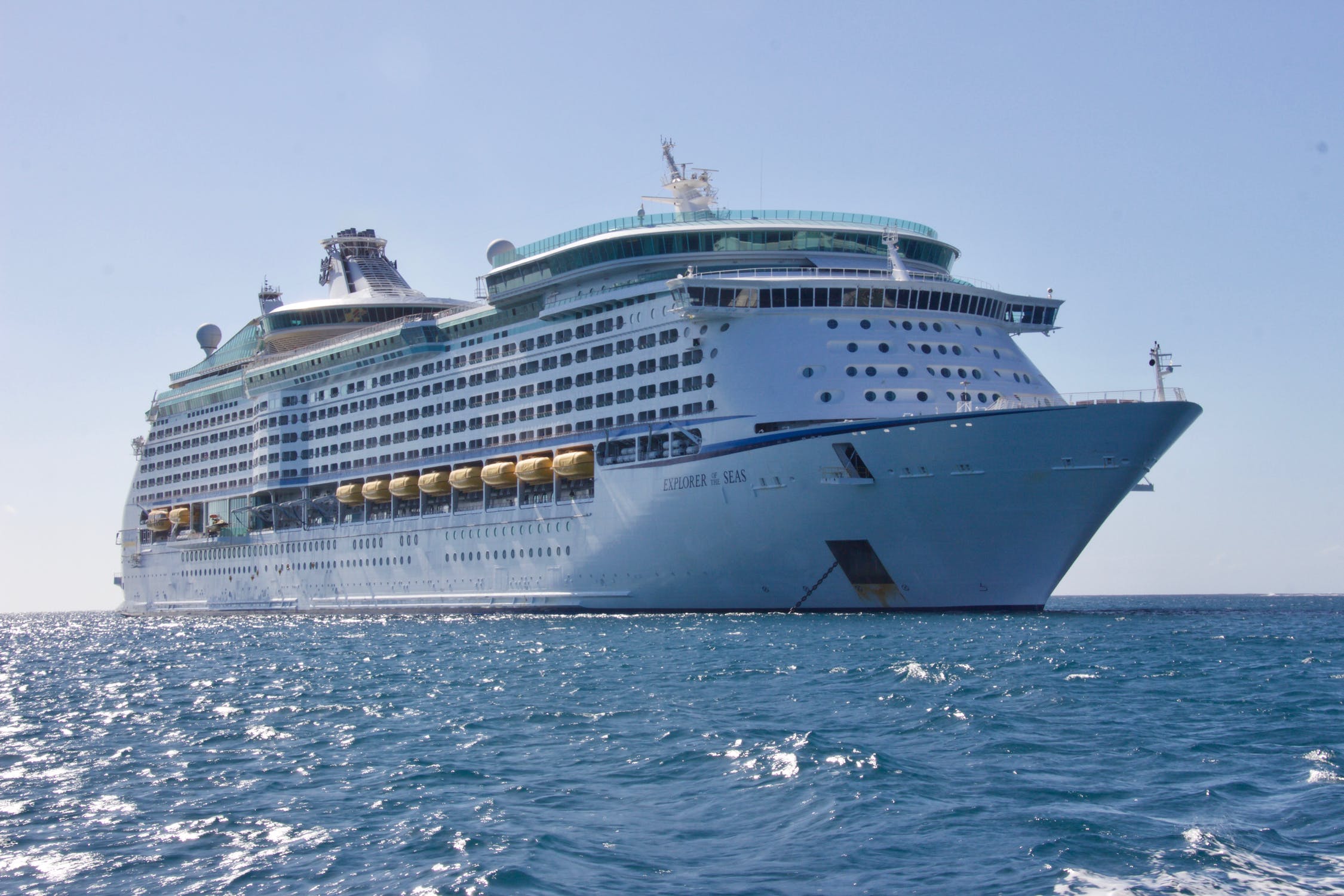
So what is a cruise ship? The cruise ship is not to be confused with an ocean liner which transports passengers from one port to another, and it should definitely not be confused with ferries, which sail shorter routes and transport people and vehicles in a decidedly less glamorous setting!
Read more: Everything You Need to Know About RoRo Ships
Cruises aren’t just confined to exotic locations either, though many people will conjure up an image of turquoise seas when thinking about cruising.
You can book local cruises as well as international ones. There are river cruises - for example along the Yangtze River in China, as well as cruises to less sunnier destinations such as polar cruises to the Arctic.
A brief history of the cruise ship
As tourism grew in popularity and venturing to different countries and even continents became more accessible to the average traveler, the 20th century saw a boom in the cruise ship industry, in particular in the United Kingdom, the USA and Germany.
When we say the ‘average traveler’ however, bear in mind that these were the upper classes, due to the prohibitively expensive costs associated with taking a cruise.
Read more: Everything You Need to Know About Mining Ships
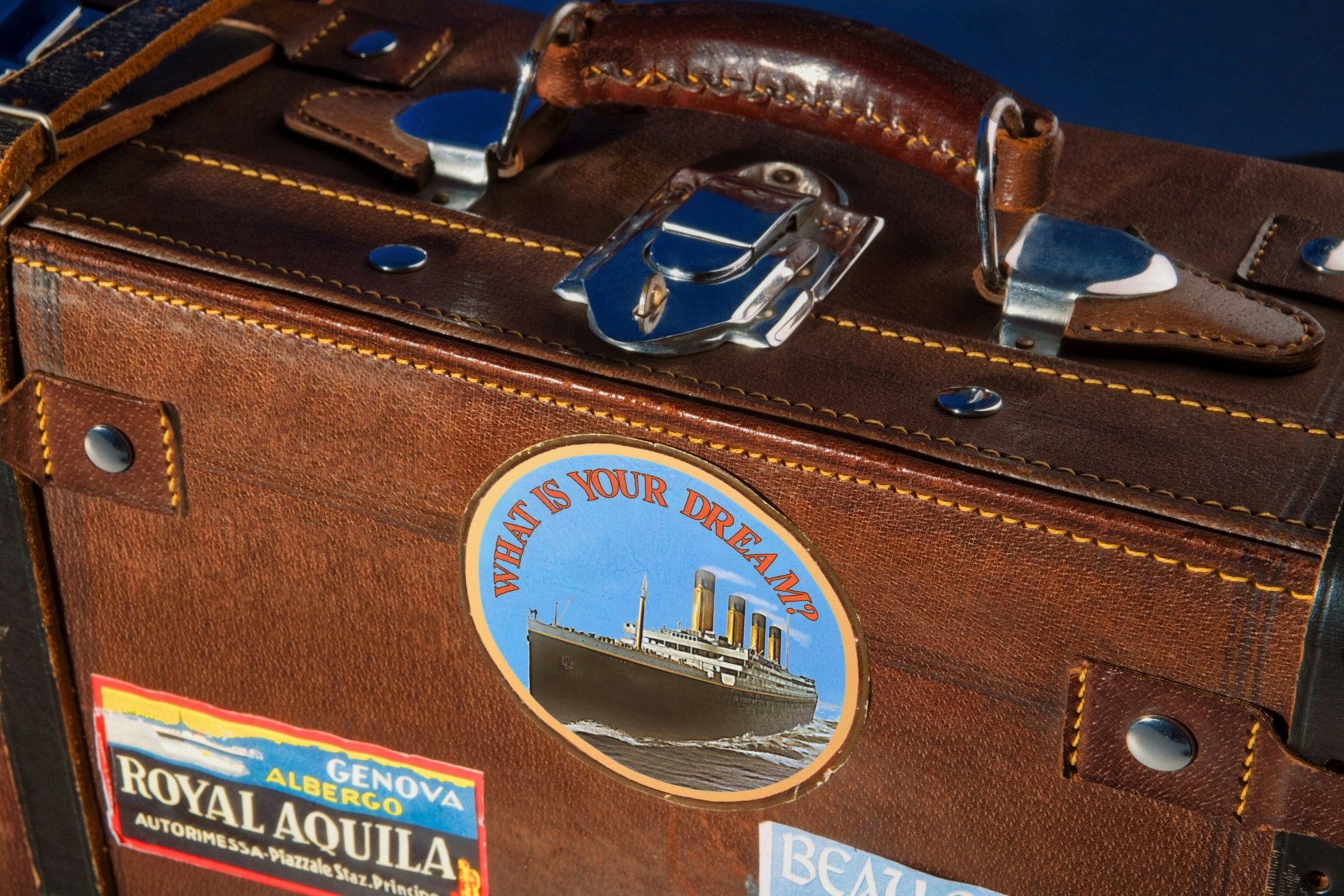
Of course the ill-fated Titanic is probably the best known of all cruise ships but other iconic vessels of around the same time were the Lusitania, a British ocean liner launched in 1906 by the Cunard Line, only to be torpedoed by a German Submarine in 1915, and the Olympic - a sister ship to the Titanic and one of the jewels in the White Star Line’s crown.
With the advent of the First World War, for obvious reasons, the tourist industry ground to a halt and many cruise liners were converted into transport for troops and ammunition.
These days the cruise industry is as popular as ever, and while no means a budget vacation, it is a lot more accessible to the general population and not just the very wealthy.
Read more: Everything You Need to Know About Lightships
Are there different types of cruise ships?
Cruise ships continue to evolve with cruise lines vying to outdo each other for a slice of the very competitive - and lucrative - market. However, facilities and five star service aside, not all cruise ships are the same or even have the same purpose.
The characteristics of a cruise ship varies depending on the length of stay it typically offers, its purpose, and of course the waters it is designed to sail in - for example, river, lake, sea or ocean. Let’s take a closer look.
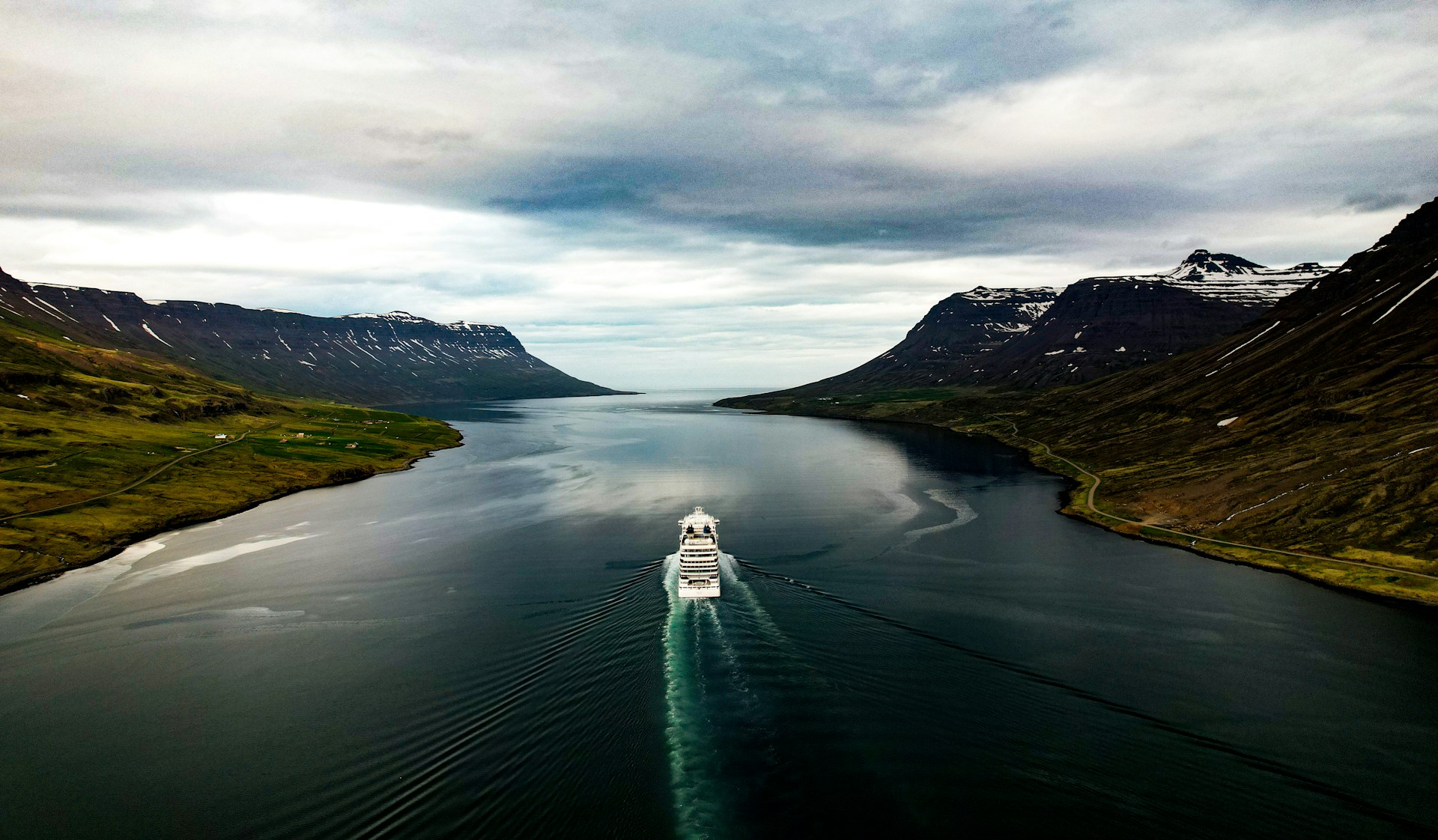
Read more: Everything You Need to Know About Cable Laying Ships
Small cruise ships
At the smaller end of the scale, small cruise ships normally range from a large yacht to a mid-sized cruise ship which has capacity for a few hundred passengers. Small scale cruises call at ports which might not be as well known as the destinations on the bigger ships’ itineraries.
They generally offer a more relaxing vacation than the bigger vessels which are like mini-cities on the water.
They also cater to individuals who like the idea of a specialized cruise; for example a cruise with a famous speaker or entertainment act, cruises for specific age groups such as 18-30 year olds or senior citizens, or lecture-based cruises.
ARE YOU LOOKING FOR JOBS ON PASSENGER SHIPS? VIEW MARTIDE’S PASSENGER SHIP JOBS NOW!
Mainstream cruise ships
The most common type of vessel is the mainstream cruise ship. With a capacity for anywhere between 850 to 3,000 passengers, these floating mini-towns come with virtually any attraction that would be found in a shore based resort.
Read more: Everything You Need to Know About Tugboats
Of course, there are any number of different restaurants and bars to be found on a cruise ship, as well as nightclubs and casinos.
There is no shortage of shops, gyms, spas, swimming pools and other sporting facilities. But what you might not expect to find on a cruise ship are the cinemas, theaters, museums, art galleries and libraries.
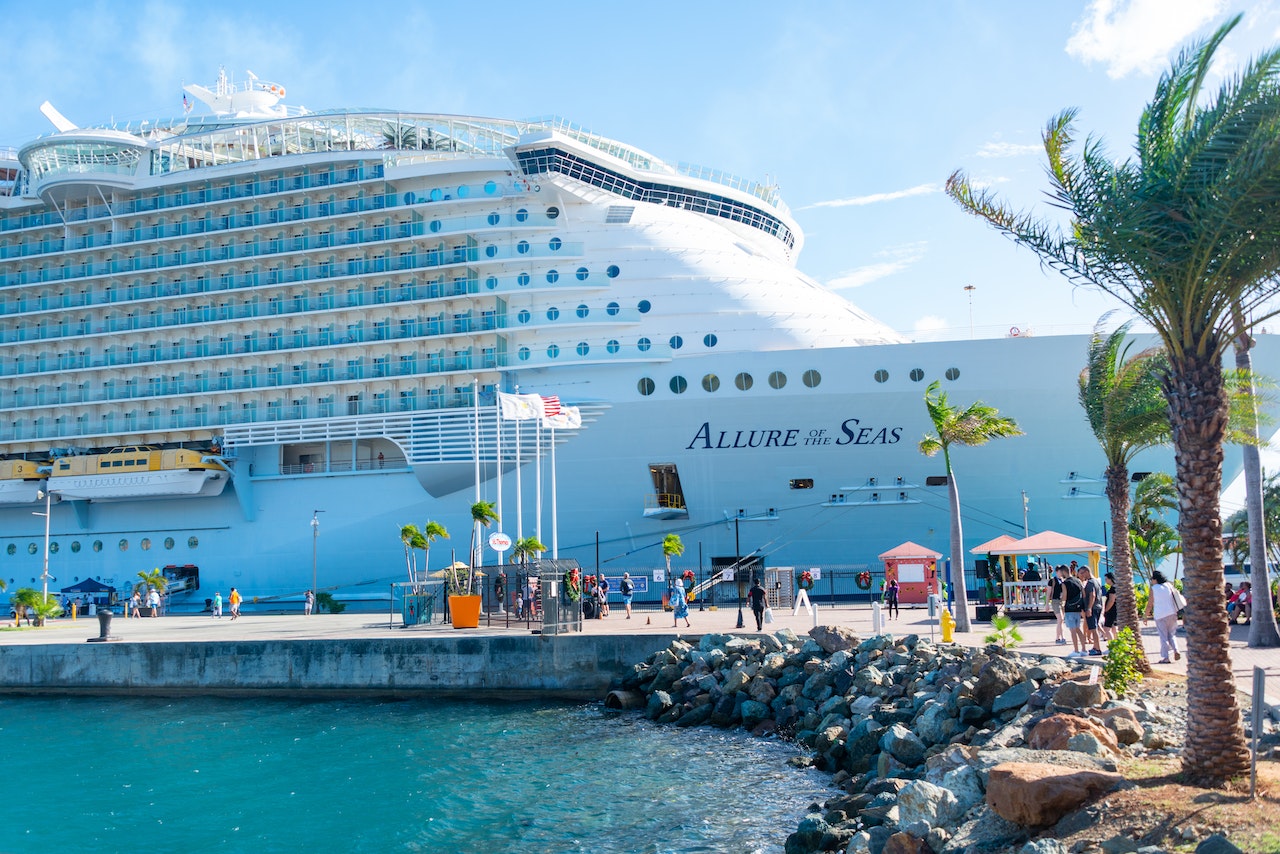
Read more: Everything You Need to Know About Pilot Boats
Mega cruise ships
The mega cruise ship is the mainstream ship’s bigger, brasher cousin. They can accommodate more than 3,000 guests and are run by a veritable army of officers, crew, Chief Stewards, Stewards and Stewardesses, cooks and chefs and even plumbers, carpenters and waste disposal operators.
River cruise ships
With a capacity for just a few hundred passengers, these smaller ships are built to traverse rivers and inland waterways, such as the Rivers Nile, Rhine, Amazon Mississippi, Yangtze and Danube. Even though they’re not ocean-going vessels, these ships can still cater to guests who are looking for a high level of luxury.
Expedition cruise ships
Forget tropical destinations and scenic city views from the river, expedition cruise ships are for those who are looking for a side order of adventure along with their vacation.
Think the Antarctic or Arctic regions, Alaska or Scandinavia to see natural phenomena such as ice flows and the northern lights. Whilst still comfortable, these cruises are more about the sights and experience rather than the luxurious amenities onboard.
Read more: Everything You Need to Know About Icebreakers
Are cruises bad for the environment?
So we’ve answered the question, what is a cruise ship, but one other thing that often comes up in conversation is the eco-friendly (or unfriendly) issue. That’s because, as popular as they are, cruises have been widely criticized for their environmental impact due to factors like fuel consumption, waste management, and emissions. However, some cruise lines are implementing initiatives to reduce their footprint.
There are a lot more positives and negatives and you could discuss the topic of cruises and the environment for hours, but here’s a breakdown of the environmental impact of cruises and what’s being done to mitigate it:
High carbon emissions
Cruise ships primarily run on heavy fuel oil, which releases large amounts of CO₂, sulfur oxides (SOx), nitrogen oxides (NOx), and particulate matter. A single cruise ship can emit as much pollution as a million cars in a day due to the high energy needed to power amenities like air conditioning, pools, and large-scale dining facilities.
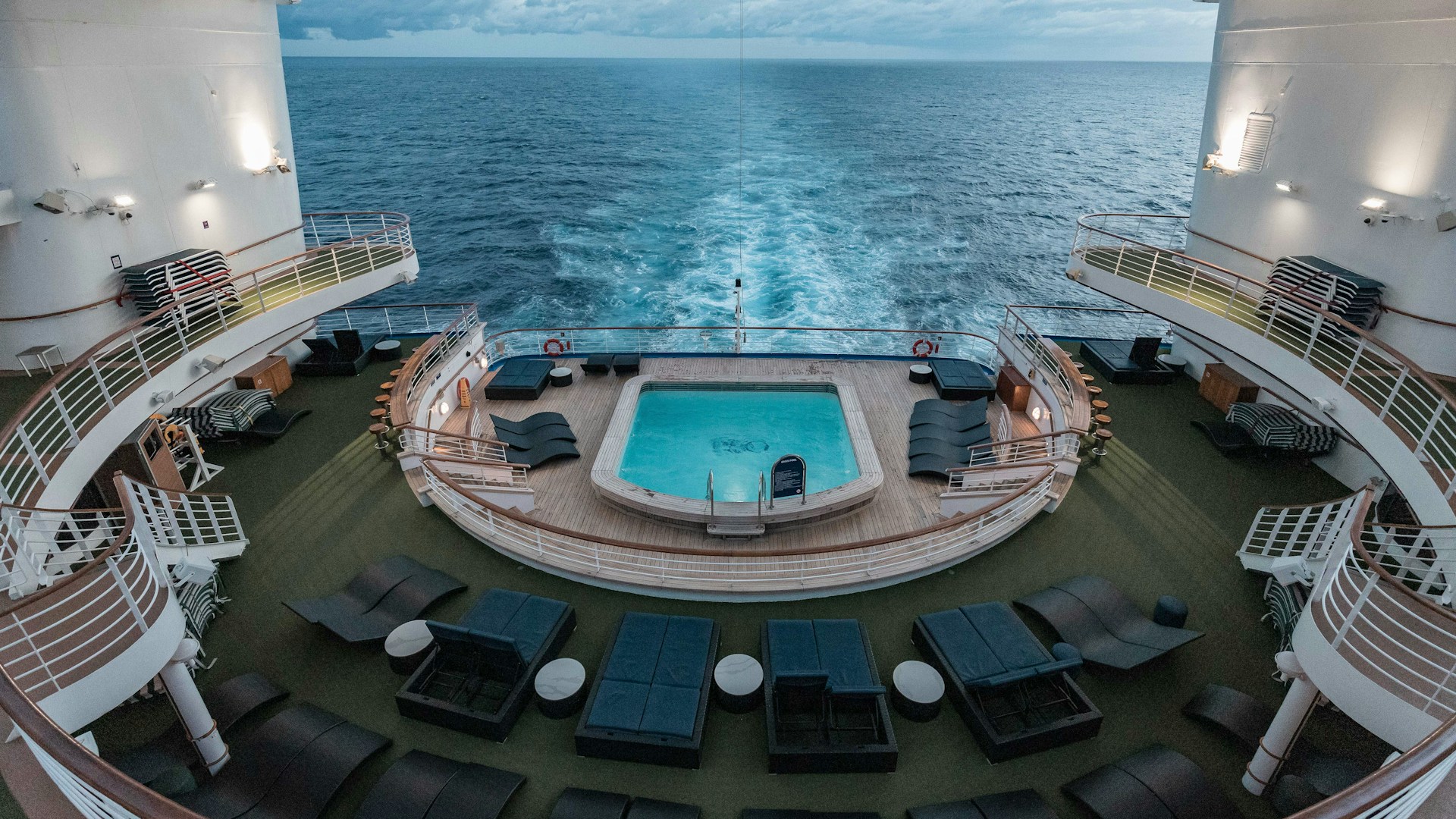
Efforts to reduce this include adopting liquefied natural gas (LNG), as seen with Royal Caribbean’s Icon of the Seas (more on the Icon in a moment), which reduces emissions of SOx, NOx, and CO₂, though LNG still has limitations as a fossil fuel.
Read more: Everything You Need to Know About Car Carrier Ships
Ocean pollution
Waste disposal is another major concern. Untreated sewage, greywater, and ballast water discharge can harm marine ecosystems and water quality. Cruise lines are supposed to follow strict regulations to treat waste before release, but enforcement can vary by region.
Some companies, like MSC Cruises, are investing in advanced wastewater treatment systems that go beyond regulatory requirements. Additionally, many lines are moving toward eliminating single-use plastics onboard to reduce plastic waste.
Impact on marine life
Cruise ships can damage marine habitats, especially coral reefs, through anchoring, pollution, and noise. The industry is moving toward sustainable practices in private island development to protect local ecosystems, such as MSC’s Ocean Cay Marine Reserve, which focuses on coral restoration and marine preservation efforts.
Read more: Everything You Need to Know About Fireboats
Overtourism and land impact
Popular cruise destinations often experience overtourism, which strains local resources and infrastructure. This can degrade natural sites and impact communities economically and socially. Indeed, in many parts of the world, such as in Juneau, Alaska and some of the Greek islands, where numerous cruise ships dock, protests by locals are becoming commonplace.
To counteract this, some cruise lines are focusing on private islands or rotating itineraries to lessen impact on heavily visited destinations. However, effective tourism management requires collaboration between cruise lines, local governments, and environmental organizations.
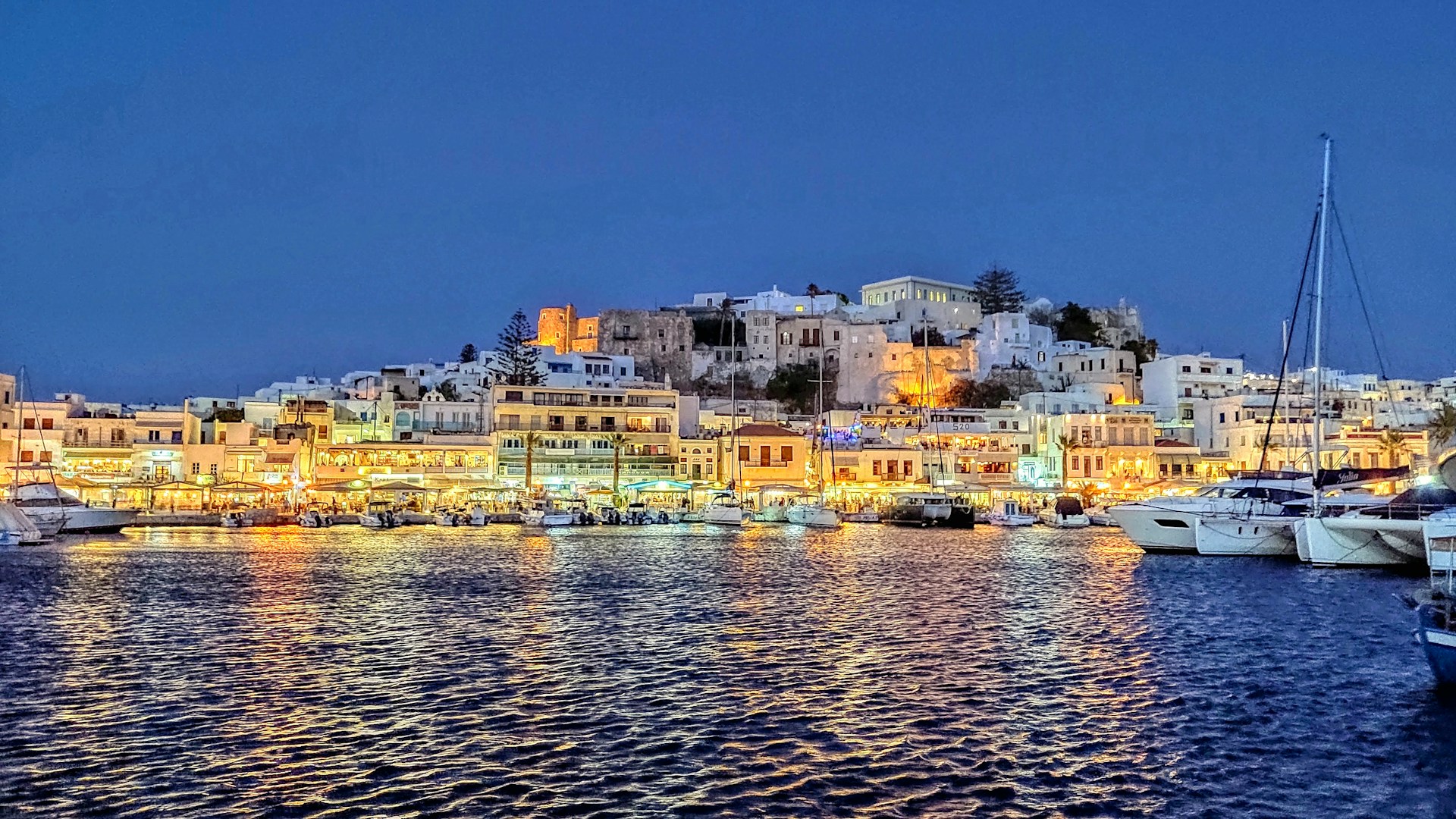
Sustainable initiatives
Some cruise lines are actively investing in sustainable technologies, such as shore power connections that allow ships to shut off engines in port, advanced air filtration systems, and green itineraries that reduce fuel consumption by optimizing routes.
Despite these initiatives, the cruise industry has a long way to go to minimize its environmental impact, and significant challenges remain in achieving truly sustainable cruising.
Who owns and operates cruise ships?
Just like other merchant ships, such as oil tankers and bulk carriers like Panamax and Supramax vessels, cruise ships are owned and operated by a company.
These companies are known as ‘cruise lines’ and there are a number of huge players in the market, as well as some smaller niche lines who are more specific to inland waterways and rivers.
Read more: Everything You Need to Know About Offshore Vessels
We mentioned a few of them above and you’ve probably heard of some, if not all, of these bigger names in the cruise world - and some of these come with a good deal of heritage to their name and brand. For example, Cunard Line was founded all the way back in 1840.
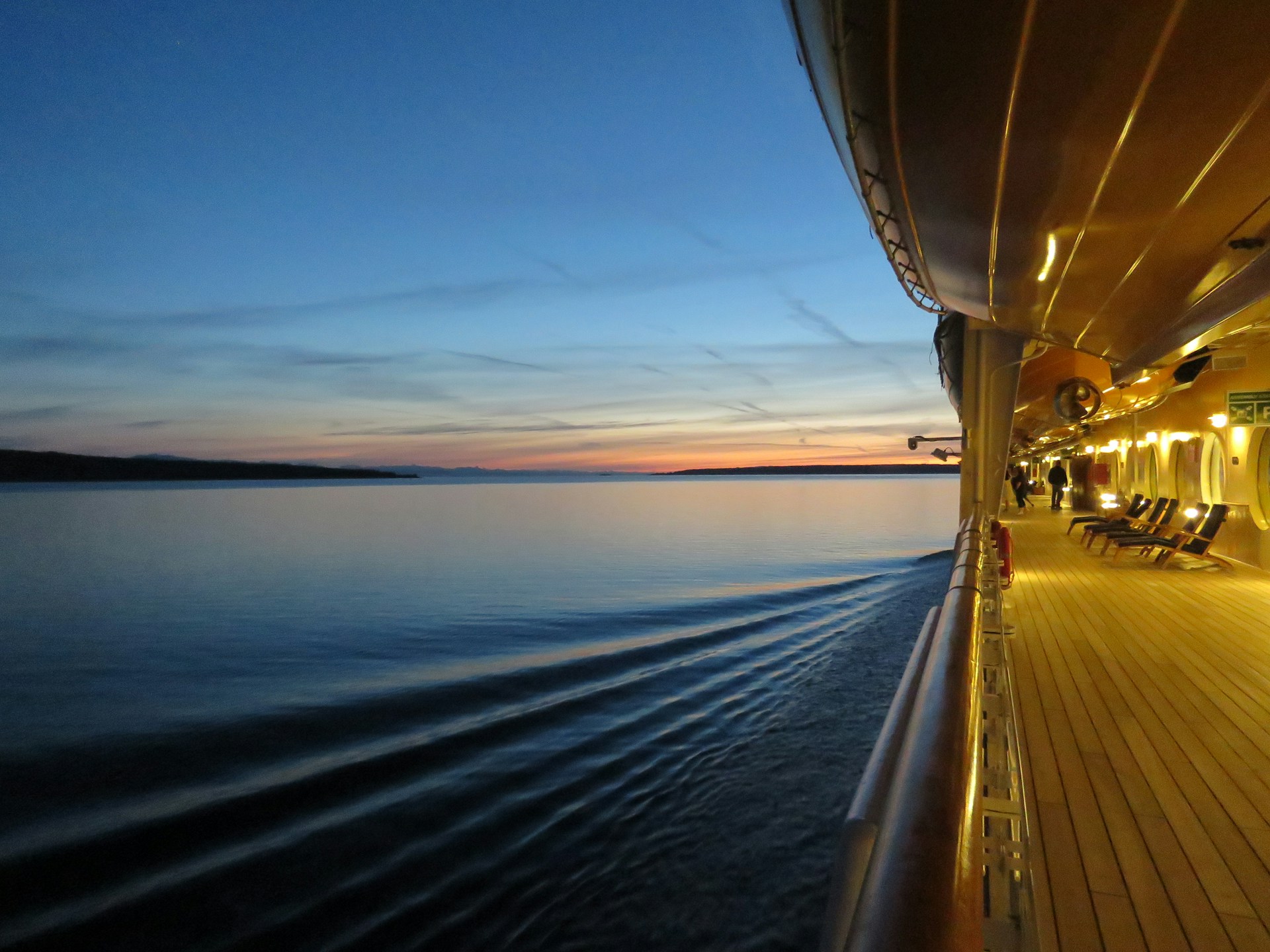
Do some cruise lines have private destinations?
If traveling the globe in style isn’t enough to get excited about, some of the major cruise lines even own (or exclusively operate) private islands and destinations for their guests, offering unique amenities and a controlled environment away from typical port stops.
A lot of these are in the Bahamas with a few examples being:
Royal Caribbean's Perfect Day at CocoCay – Located in the Bahamas, CocoCay features a massive waterpark with the tallest waterslide in North America, a helium balloon ride, private overwater cabanas, and multiple beaches. It offers both thrills and spills as well as relaxation zones to make sure that all of their guests’ preferences are catered to.
Disney Cruise Line's Castaway Cay – You can rely on the Mouse to get involved in the fun, and also in the Bahamas, is Castaway Cay. Designed with family-friendly activities, including a snorkeling lagoon, a splash zone for kids, and separate beach areas for families, teens, and adults. Of course, Disney characters make appearances on the island, adding a Disneyfied touch to the tropical setting.
Read more: Everything You Need to Know About Pilot Boats
Norwegian Cruise Line's Great Stirrup Cay – Norwegian’s private island in the Bahamas offers activities such as snorkeling, kayaking, ziplining, and a luxurious private retreat called Silver Cove, where guests can enjoy private cabanas and a dedicated restaurant.
MSC Cruises' Ocean Cay MSC Marine Reserve – MSC transformed this Bahamian island into an eco-friendly destination with pristine beaches, snorkeling, and an emphasis on marine conservation. The island has its own Marine Reserve, coral nurseries, and a commitment to sustainability.
These private destinations allow cruise lines to create exclusive, customized experiences that enhance the overall cruise journey. They usually include activities like water sports, dining options, and entertainment tailored to guests, providing a unique retreat that differs from traditional port stops.
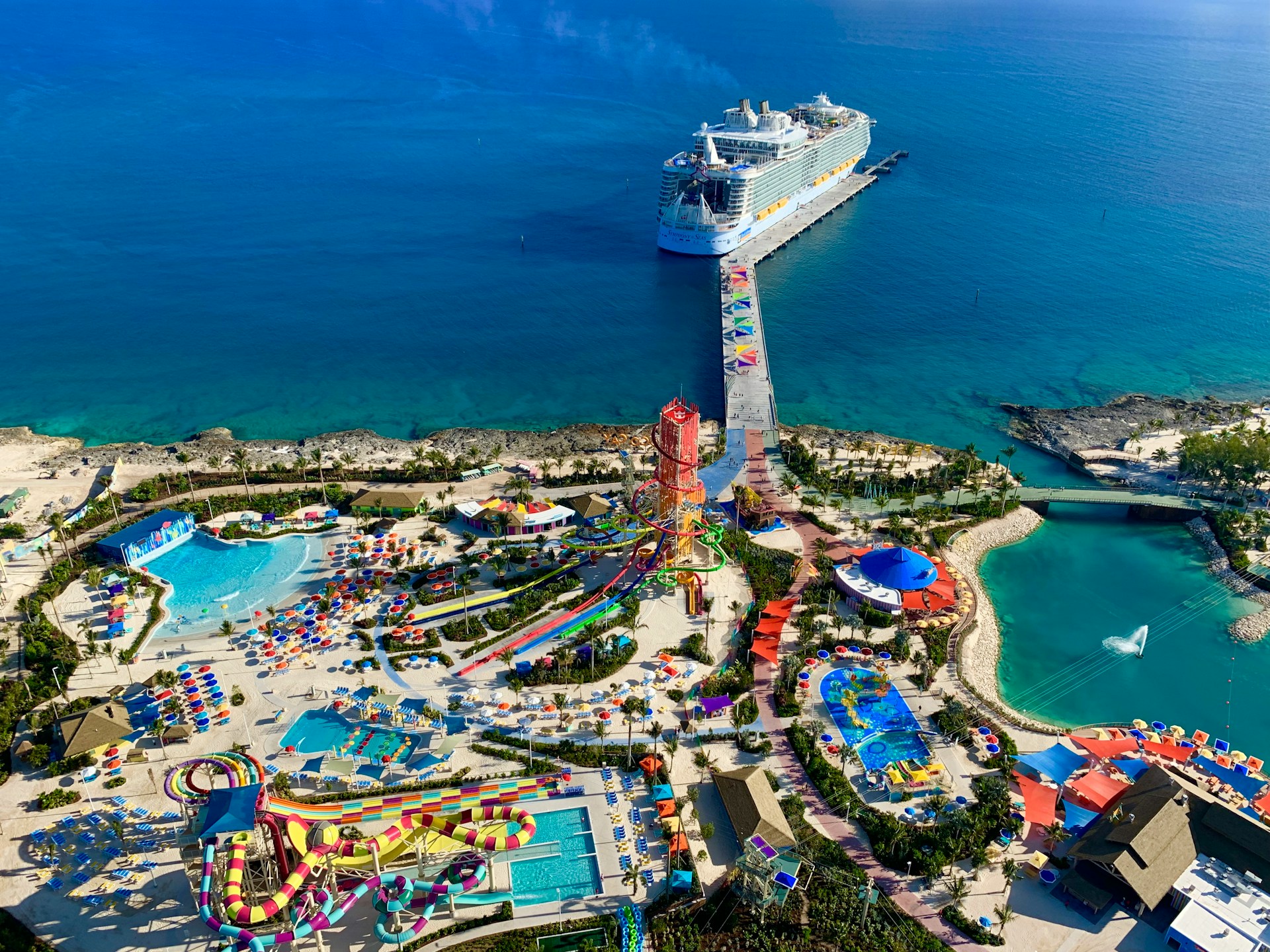
What is the world’s largest cruise ship?
As of the time of writing, the world's largest cruise ship is currently Royal Caribbean's Icon of the Seas, which began sailing in January 2024. This ship sets records with a colossal 250,800 gross tonnage and spans nearly 1,200 feet. It can accommodate up to 7,600 passengers and 2,350 crew members across its 20 decks.
Icon of the Seas features eight "neighborhoods," each offering unique amenities and atmospheres, including Central Park with live plants, the expansive AquaDome with aquatic shows, and Chill Island with seven pools.
Read more: Everything You Need to Know About Dredgers
One major highlight is the Category 6 waterpark, which includes the largest onboard water slides. Icon of the Seas also boasts an infinity pool, various family-friendly suites, and over 20 dining venues, ensuring a diverse experience for all guests.
The vessel also stands out for being Royal Caribbean's first LNG-powered ship, part of the company's commitment to more sustainable cruising. It has become highly popular, with advanced bookings surpassing previous records.

Can you live on a cruise ship year round?
Another question, along with what is a cruise ship and what is the world’s biggest cruise ship that is often asked, is whether or not you can live on a cruise ship all year long.
The answer is yes. You can live on a cruise ship year-round, and there are several options for doing so. The concept of "residential cruising" has gained popularity recently as some ships and cruise lines offer long-term or even permanent residency options. Here’s an overview of how it works and what options are available:
Residential cruise ships
This where passengers buy apartments onboard and live full-time or for extended periods as the ship continuously travels the world. Residents have access to luxury amenities, dining options, and a high level of privacy. However, purchasing a unit can be costly, with condos ranging from the low millions to over $15 million - plus annual fees. The World cruise ship is probably the most famous example of a residential cruise ship at the moment.
Read more: Everything You Need to Know About Gas Carrier Ships
Year-long cruises
Some traditional cruise lines, like Holland America Line and Regent Seven Seas, offer "world cruises" that span several months and cover multiple continents, catering to guests interested in an almost continuous cruise experience. Passengers can book back-to-back itineraries on these ships to live on board for most of the year.
Royal Caribbean and MSC also offer extended cruises with multi-leg journeys that allow travelers to experience a year at sea. Booking such a journey requires careful planning but can cost significantly less than full-time residency on a residential cruise ship.

ARE YOU LOOKING FOR JOBS ON PASSENGER SHIPS? VIEW MARTIDE’S PASSENGER SHIP JOBS NOW!
What are the practical considerations of living on a cruise ship?
The cost of living on a cruise ship year-round varies widely, depending on the type of accommodation and services selected. A basic long-term arrangement might start around $70,000 per year for standard staterooms, while high-end suites or permanent residences on ships like The World can exceed hundreds of thousands annually.
Amenities, such as onboard healthcare, internet, and laundry, are often included or available at an extra charge, and cruise ships offer dining options, fitness centers, entertainment, and shore excursions as part of the lifestyle, appealing to those seeking a mobile, all-inclusive living experience.
Living full-time on a cruise ship is an option for those who enjoy travel, minimalism, and the social atmosphere of cruise life. It can be a unique lifestyle choice, though costs and onboard limitations (e.g., smaller living spaces, occasional internet restrictions) are factors to consider.
Read more: Everything You Need to Know About LNG & LPG Tankers
What is a cruise ship: final thoughts
It has to be said that there are people that are very much for cruise ships - and others who are very much against them, but whichever side you fall upon, it’s hard to deny that they are fascinating vessels - if not just for their sheer size and complexities.
And now that you know more about cruise ships, is it possible that you might be weighing up your options for your next vacation - or even checking your bank balance to see if living year round on a cruise ship is within your budget!?
Read the previous article in this series: Everything You Need to Know About Crane Vessels
Read the next article in this series: Everything You Need to Know About Supramax Vessels
This blog post was originally published on July 21st 2022 and updated on November 7th 2024

Eve Church
Eve is Martide's content writer, publishing regular posts on everything from our maritime recruitment and crew planning software to life at sea. Eve has been writing professionally for more than two decades, crafting everything from SEO-focused blog posts and website landing pages to magazine articles and corporate whitepapers.
UK
